|
Austria
|

|

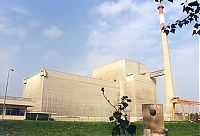
|

|
Zwentendorf, a Nuclear Plant That Will Never Be Turned on
On the bank of the Danube 20 miles northwest of Vienna stands a completed nuclear power plant, loaded with fuel, ready to start up. It has stood there, just so, for 9 years, while the Austrians argue about what to do with it. The most popular plan is to turn it into a museum for obsolete technology.
The plant, called Zwentendorf, was intended to be the first of six Austrian nuclear plants. It was begun in 1970 and completed in 1978 at a cost of 8 billion Austrian schillings -- at present value about a billion dollars. It is rated at 700 megawatts, about two-thirds the size of Seabrook and Shoreham, two American nuclear plants that are also ready to go and hotly contested.
"When Zwentendorf began, we didn't know anything," an Austrian environmentalist told me. "Nuclear power sounded better to us than a coal plant or another hydropower dam on the Danube. If only we had known then what we know now."
They know now that two of the four German plants with the same design as Zwentendorf have been shut down permanently by mechanical problems. They know now that Zwentendorf is located squarely on an earthquake fault zone. And during a Danube flood, water seeped into its containment vessel, so now they know that the groundwater is not protected from contamination in case of a meltdown.
Furthermore Austria, like every other country with nuclear power, has no plan for the disposal of nuclear waste. The original idea had been to bury it in deep granite under the Alps. But the villages at the chosen site vehemently rejected this plan, and by Austrian law a locality cannot be forced to accept such an imposition from the federal government. The Austrians offered the waste to Hungary, Egypt, and China, but all refused. The Shah of Iran was eager to have it, but then he fell from power. The Ayatullah wasn't interested.
By the time Zwentendorf was finished, so many doubts had been raised that the government was forced to hold a referendum to decide whether to start the plant. During the weeks preceding the vote, the argument raged -- the same one that polarizes every country that permits public discussion of nuclear power. People were told they had to choose between progress and safety, between jobs and the environment, between present brownouts and future contamination. Bruno Kreisky, then Chancellor, declared Zwentendorf a top priority and appealed for a yes vote. Austrians still do not agree whether he caused more anti-Zwentendorf pro-Kreisky people to vote yes than he did pro-Zwentendorf anti-Kreisky people to vote no.
At any rate, on November 5, l978, 50.5% of the voters said no to Zwentendorf. The Austrian nuclear power program came to a halt.
In spite of the warnings from the pro-Zwentendorf side, there were no brownouts, and the country's economy did not collapse. The plant sat there, the focus of an impasse between the government, which never got around to decommissioning it, and the environmentalists, who suspected the authorities of waiting for a favorable political climate to start it up. Opinion polls on Zwentendorf continued to show about 50% for and against. There were rumors that the plant had been secretly tested and thereby contaminated with radioactivity.
Then came Chernobyl. Austria's first spring lettuce and strawberries had to be dumped, and farmers were only partially compensated. Children were not permitted to play in outdoor sandboxes. Austrians watched all the governments of Europe give conflicting, confusing statements about nuclear safety. The polls suddenly showed only 10% of the voters in favor of opening Zwentendorf.
The government says that now Zwentendorf will be decommissioned. No one knows what will be done with it. It could be converted into some other kind of power plant, but that would be nearly as expensive as building a new plant from scratch. Some have suggested filling it with the hazardous chemical wastes of Europe. Others want to use it as a conference center for anti-nuclear groups.
It used to be a joke that Zwentendorf could be a museum for failed technologies, with a wonderful one-to-one scale model of a nuclear power plant. The province of Lower Austria has taken the joke seriously. It would like to make a park there, which it calls "Historyland", an exhibition on the development of human civilization.
I used to think that only Austria could walk away from a completed nuclear power plant. The Zwentendorf story could not apply to Seabrook and Shoreham and the other 26 nuclear plants about to come on line in the United States. Here the financial consequences of a cancellation fall on private investors rather than the public budget. Here the residents of whatever site the government chooses for waste disposal have no legal recourse. We have, as Austria does not, a domestic nuclear industry and a nuclear-based defense system with powerful lobbies. And we do not decide the fate of nuclear power plants by public referenda.
If we did, polls indicate, 78% of us would vote no. The utility companies themselves are voting no. These last 28 plants were all ordered before 1974; all subsequent orders have been cancelled.
The Austrians are not the only ones who have learned that, whether or not it is an obsolete technology, nuclear power is an expensive and dangerous one. The question is whether they are the only ones with a political system flexible and democratic enough to respond to what most of the people have finally learned.
19 files, last one added on Jan 11, 2006
Album viewed 354 times
|
|
|
|
|
|
|
|
|
|
|
|
|
|
|
|
|
|
|
|
|
|
|
|

02921 viewsNov 28, 2025 at 01:57 PM
|
|
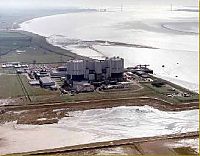
Oldbury1423 viewsNov 28, 2025 at 09:31 AM
|
|
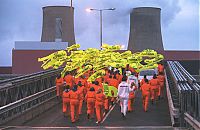
The Sellafield nuclear plant in Cumbria.3859 viewsNov 28, 2025 at 09:31 AM
|
|
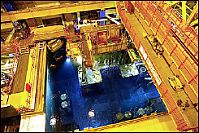
Sellafield2136 viewsNov 28, 2025 at 09:31 AM
|
|
|
|
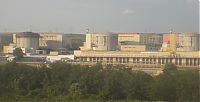
CernavodaAug 12, 2013
|
|
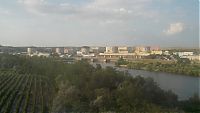
CernavodaAug 12, 2013
|
|
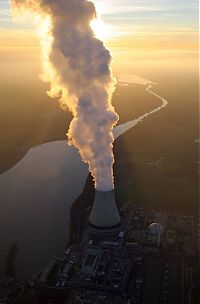
Nuclear plants Isar 1 and Isar 2Sep 18, 2008
|
|
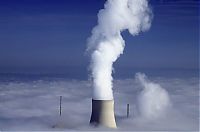
Isar 1 and 2 with fogSep 18, 2008
|
|
